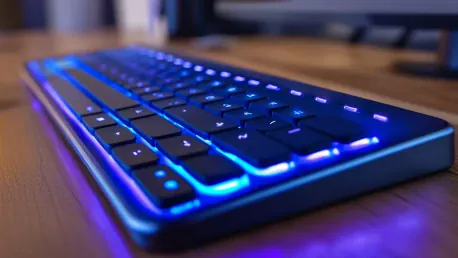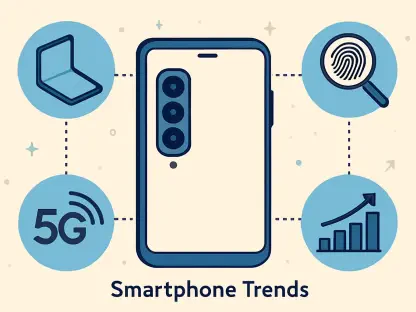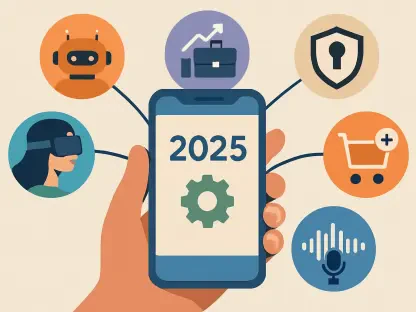Efficient text input in virtual and augmented reality (VR/AR) environments has long posed a formidable challenge. As XR technologies continue to evolve, the need for effective typing methods without conventional keyboards has become increasingly critical. Researchers have employed significant efforts to address this issue, aiming to improve productivity in immersive settings using innovative techniques. A notable endeavor in this field is the XR TEXT Trove developed by a collaborative team from the VR Lab at the University of Birmingham, alongside experts from the University of Copenhagen, Arizona State University, the Max Planck Institute for Intelligent Systems, Northwestern University, and Google. This initiative categorizes over 170 text input techniques tailored for XR.
The XR TEXT Trove repository is meticulously organized with 32 codes covering 13 interaction attributes and 14 performance metrics such as Words Per Minute (WPM) and Total Error Rate (TER). These attributes encompass input devices, the body parts utilized for data entry, concurrency, and haptic feedback modalities. The comprehensive range of these characteristics provides an extensive overview of the current state of XR text entry methods, highlighting their advantages and limitations across both academic and industry settings.
XR TEXT Trove Insights
From the cataloged techniques in the XR TEXT Trove, several key insights emerge. The effectiveness of text input methods is intrinsically linked to the number of input elements employed, such as fingers or controllers. Multi-finger typing proves to be the most efficient, mirroring the performance of touch-typing on traditional keyboards. Each additional input element can enhance a user’s typing speed by approximately 5 WPM. This discovery underscores the importance of maximizing the use of available input elements to boost typing efficiency in XR environments.
Additionally, techniques involving haptic feedback, external surface typing, and fingertip-only visualizations have demonstrated superior performance. These methods offer a more comfortable typing experience, significantly reducing muscle fatigue and helping to prevent conditions like Gorilla Arm Syndrome. Despite the array of innovative methods explored, none have yet fully supplanted traditional keyboards, which maintain the highest WPM despite their steep learning curves. Researchers propose harnessing Machine Learning and AI to advance XR text input performance, potentially introducing efficient ‘swipe typing’ solutions.
Enhancing User Experience
Another critical aspect explored by the XR TEXT Trove is how user experience is impacted by different text input techniques. Haptic feedback emerges as a vital factor in improving user satisfaction and overall comfort. This feedback can range from simple vibrations to complex tactile sensations, providing users with a tangible response as they type. Such interactions have been found to minimize muscle strain and enhance typing speed, especially during prolonged use in VR environments.
Moreover, techniques that integrate typing on external surfaces closely mimic traditional keyboard experiences, allowing users to leverage familiar muscle memory. Finger-tip visualization, which displays a visual representation of finger positions on a virtual keyboard, further enhances accuracy and reduces errors. These advancements collectively contribute to a more intuitive and comfortable typing experience, encouraging prolonged use and boosting overall productivity in XR applications.
Future Innovations
Despite the strides made in improving XR text input techniques, researchers acknowledge that further innovations are necessary to achieve optimal efficiency. One promising avenue involves reducing travel distances on multi-finger keyboards through advanced AI algorithms and Machine Learning models. By optimizing finger movements and predicting user intent, these technologies could significantly increase typing speed and accuracy, potentially creating a viable alternative to traditional keyboards.
Additionally, the development of adaptive text input systems that respond to individual user behaviors and preferences represents a significant area of interest. Such systems could adjust typing methods based on user skill levels, hand sizes, and preferred typing styles, providing a personalized and efficient typing experience. As researchers continue to explore and refine these innovative approaches, the future of text input in XR environments promises to be both engaging and productive.
Conclusion
Efficient text input in virtual and augmented reality (VR/AR) environments has long posed a significant challenge. As XR technologies advance, the need for effective typing methods without traditional keyboards has become increasingly important. Researchers have dedicated substantial effort to tackling this issue, aiming to enhance productivity in immersive settings with innovative techniques. A notable project in this field is the XR TEXT Trove, developed by a collaborative team from the VR Lab at the University of Birmingham, as well as experts from the University of Copenhagen, Arizona State University, the Max Planck Institute for Intelligent Systems, Northwestern University, and Google. This initiative classifies over 170 text input techniques designed for XR.
The XR TEXT Trove repository is meticulously organized, incorporating 32 codes that cover 13 interaction attributes and 14 performance metrics like Words Per Minute (WPM) and Total Error Rate (TER). These attributes include input devices, body parts used for entry, concurrency, and haptic feedback. The extensive range of characteristics provides a broad overview of the current state of XR text entry methods, outlining their benefits and limitations in both academic and industry contexts.









